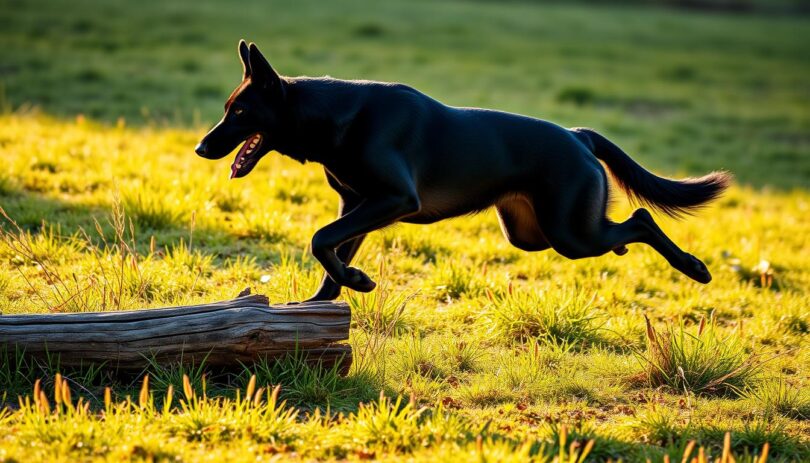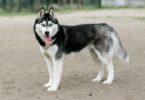Meet the Black Belgian Malinois, a rare and captivating variation of the Belgian Malinois breed. Known for their striking solid black coat, these dogs are not just a visual standout but also excel in high-drive tasks and professional training.
While the traditional Belgian Malinois typically has a fawn coat with a black mask, the solid black variation, though not breed standard, impresses with its exceptional trainability and energy. This guide offers expert advice on caring for and training your Black Malinois, backed by insights from the American Kennel Club and seasoned owners.
Discover the challenges and rewards of owning this unique dog, focusing on proper training techniques and daily routines to ensure a fulfilling relationship with your pet.
Understanding the Belgian Malinois Heritage
The Belgian Malinois traces its roots back to Mechelen, Belgium, where it was bred in the late 19th century. Originally, these dogs were vital on Belgian farms, handling tasks like herding and guarding.
Their versatility quickly became evident as they transitioned into military roles during World War I and II. Beyond warfare, they excelled in police detection, showcasing their adaptability and intelligence.
Compared to German Shepherds, the Belgian Malinois shares a similar work ethic but differs in physical traits like head shape and coat length. This distinction highlights their unique identity in the working dog realm.
The American Kennel Club recognized the breed in 1959, underscoring their growing popularity. This acknowledgment helped reestablish their presence in the U.S., especially after a decline during World War II.
Distinct Physical Characteristics and Appearance
The Black Belgian Malinois stands out with its distinctive physical traits, setting it apart from other Belgian Shepherd varieties. Their solid black coat is a rare variation, differing from the standard fawn coat with a black mask. This unique appearance often leads to confusion with other breeds like the Groenendael.
Coat, Size, and Build Details
Their double-layered coat consists of a dense undercoat and a harsh outer layer, providing protection in various climates. Males typically stand between 24 to 26 inches at the shoulder, while females range from 22 to 24 inches. Weighing between 60 to 80 pounds, their muscular build is designed for speed and agility, making them excel in high-drive tasks.
Comparing Belgian Shepherd Varieties
Compared to other Belgian Shepherd varieties, the Black Belgian Malinois has a shorter coat. The Tervuren and Groenendael have longer coats, while the Laekenois features a rough coat. These differences highlight their unique identities within the breed group.
Their athletic body structure, with a triangular ear shape, enhances their working abilities. This physical makeup not only aids in their performance but also influences their training and exercise needs, requiring intense daily workouts to maintain health and happiness.
Understanding these physical aspects is crucial for tailoring training and care. For more detailed care tips, visit our guide on Black German Shepherd care.
Behavior and Temperament Insights
The Black Belgian Malinois is renowned for its high energy and intelligence, making it a formidable working dog. These traits, while advantageous in professional settings, present unique challenges for owners aiming to maintain their pet's mental and physical wellbeing.
Understanding their behavior is crucial for providing the right care. Their intelligence demands consistent mental stimulation, while their energy levels require structured routines and ample exercise. Without these, they can become restless or destructive.
High Energy and Intelligent Nature
As a fiercely intelligent and active breed, the Black Belgian Malinois thrives on mental and physical challenges. Their high drive makes them excel in tasks but also means they need more than basic activities to stay satisfied. Advanced training and varied exercises are essential to keep them engaged and happy.
Their reputation as “maligators” highlights their intense focus and work ethic. This nickname underscores the need for experienced owners who can provide the necessary structure and stimulation, ensuring their energy is channeled positively.
Social Dynamics and Family Compatibility
While loyal and affectionate, the Black Belgian Malinois may not be the best fit for all families. Their strong bond with one or two individuals can make them less inclined to interact with larger groups, especially children, due to their high energy and protective instincts.
Successful ownership hinges on understanding their needs and lifestyle. They require owners who can commit to their demanding routine and provide a stable, loving environment. For those who can meet these challenges, the reward is a deeply devoted companion.
For more insights on managing high-energy pets, visit our guide on high-energy dog care.
Caring for the Black Belgian Malinois: Training and Daily Exercise
Proper training and exercise are essential for the Black Belgian Malinois, a breed known for its high energy and intelligence. These dogs thrive on structure and mental challenges, making them highly trainable when approached with consistency and compassion.
Effective Training Techniques for High-Energy Dogs
Training a Black Belgian Malinois requires a structured approach. Start with basic obedience commands like “sit” and “stay,” then gradually introduce more complex tasks. Positive reinforcement, such as treats and praise, works well. For puppies, keep sessions short (5-10 minutes) to maintain focus. Adults can handle longer sessions (10-15 minutes), but variety is key to prevent boredom.
Strategies for Mental and Physical Stimulation
Physical exercise is crucial. Daily routines should include runs, walks, and playtime, totaling at least 1-2 hours. Mental stimulation is equally important; use puzzle toys and obedience drills to keep them engaged. A malinois puppy needs consistent training from an early age to channel their energy positively.
With the right approach, your Black Belgian Malinois can be a well-adjusted and loyal companion.
Health, Nutrition, and Grooming Essentials
Keeping your dog in top shape involves more than just exercise. Proper health care, nutrition, and grooming are vital for their wellbeing. Here’s how you can ensure your companion stays healthy and happy.
Preventative Health Care and Common Concerns
Regular check-ups are key to preventing health issues. Common problems include joint dysplasia, eye issues, and ear infections. Consult a vet regularly and keep an eye out for signs of trouble.
Ear infections are especially common due to their floppy ears. Clean them weekly and check for redness or odor. A balanced diet and active lifestyle can help prevent joint problems and obesity.
Dietary Guidelines for Every Life Stage
Your dog’s diet needs to change with their age. Puppies need high-protein food for growth, while adults require balanced meals. Seniors may need less protein and more joint support.
Choose high-quality dog food with whole ingredients. Avoid fillers and by-products. Portion control is crucial to prevent overfeeding and maintain a healthy weight.
Grooming Routine
Grooming helps keep your dog’s coat healthy and reduces shedding. Brush them weekly, especially during shedding season when they lose their undercoat.
Trim nails monthly and check ears for infections. Dental care is also important—brush their teeth a few times a week to prevent tartar buildup.
A consistent grooming routine strengthens your bond and keeps your dog comfortable and clean.
Working Roles and Service Capabilities of the Black Belgian Malinois
The Black Belgian Malinois excels in various professional roles, showcasing its versatility and exceptional abilities. Whether in law enforcement, rescue missions, or therapy work, this breed demonstrates remarkable adaptability and skill.
Applications in Law Enforcement and Rescue
Law enforcement agencies worldwide rely on the Black Belgian Malinois for high-intensity tasks. Their expertise in detection, whether it's narcotics or explosives, makes them invaluable assets. For instance, Steel and Carbon, two notable Malinois, have made significant contributions in these fields.
In rescue scenarios, their herding instinct and disciplined work ethic prove invaluable. The breed's ability to navigate challenging environments and locate individuals in distress highlights their importance in search and rescue operations.
The Versatility of Working Dog Roles
Compared to other Belgian Shepherd types, the Malinois stands out for its unique traits. While the Tervuren and Groenendael have longer coats, the Malinois's shorter coat and muscular build make it ideal for agility and speed in professional settings.
Historically, the Malinois has served in military roles during both World Wars and continues to be a key player in modern military operations. Their participation in canine sports like agility and Schutzhund further showcases their athleticism and trainability.
For more insights into how breeds like the Belgian Shepherd excel in detection roles, explore our detailed guide.
Final Thoughts on Bringing Home Your Black Belgian Malinois
Bringing home a Black Belgian Malinois is a decision that requires careful thought and preparation. This rare variation of the Belgian Malinois breed offers a unique combination of intelligence, energy, and loyalty, making it a rewarding yet challenging companion.
Before deciding, evaluate your lifestyle and experience. These dogs thrive on structure and mental stimulation, requiring consistent training and exercise. If you're considering adoption, connecting with reputable breeders or rescue organizations can provide valuable insights and help you find a dog that fits your life.
While the Black Belgian Malinois is not breed standard, their temperament and needs align with the broader breed characteristics. They are loyal and intelligent, deserving of a committed owner who can provide the necessary care and attention.
Remember, owning a Black Belgian Malinois is a long-term commitment. Ensure you're ready to handle their high energy, regular grooming, and potential health issues. With the right care, they can be a devoted and loving companion for years to come.
FAQ
What makes the Belgian Malinois a popular working dog?
The Belgian Malinois is highly trainable and excels in roles like police and military work due to its intelligence, energy, and focus.
How much exercise does a Belgian Malinois need daily?
They require at least 2 hours of exercise, including physical activity and mental stimulation, to stay happy and healthy.
Are Belgian Malinois good family pets?
Yes, they can make great family pets if properly trained and socialized, thriving in active households that can meet their exercise needs.










Leave a Comment